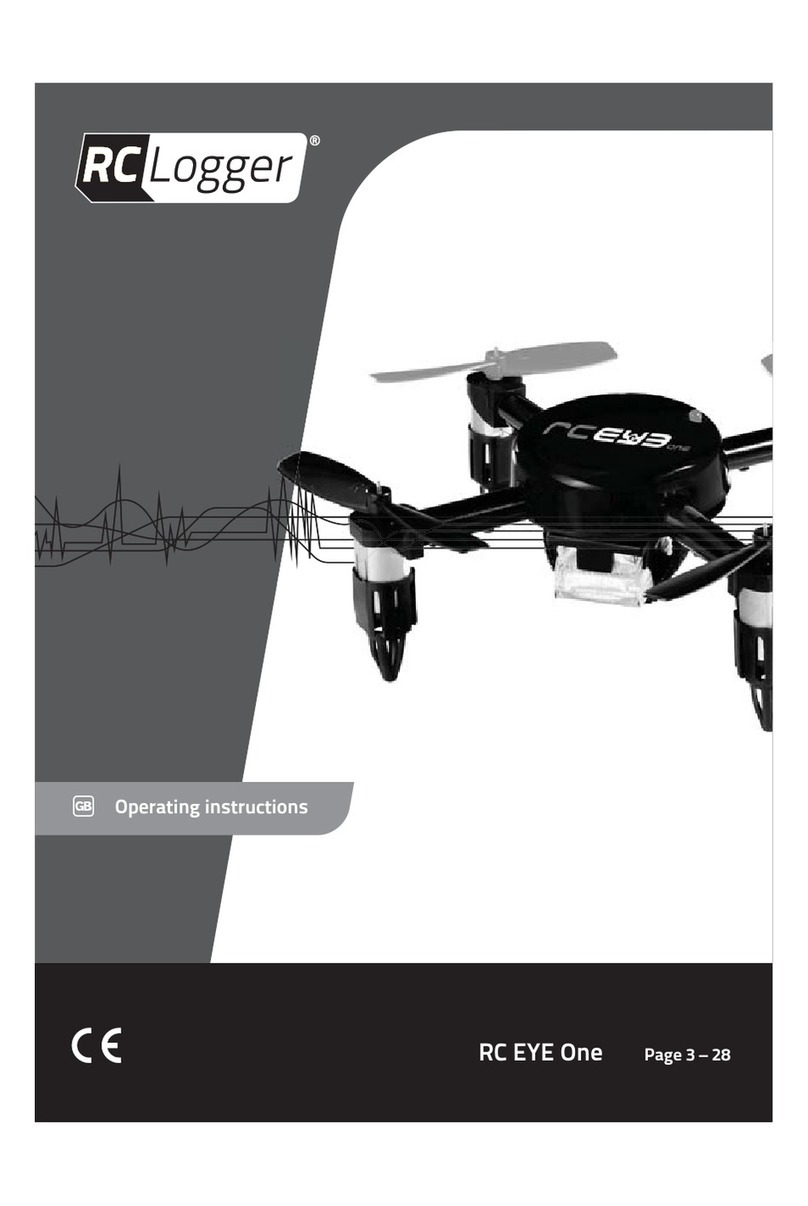6
4. SAFETY INSTRUCTIONS
Read the operating instructions carefully and especially observe the safety information.
If you do not follow the safety instructions and information on proper handling in this
manual, we assume no liability for any resulting personal injury or damage to property.
Such cases will invalidate the warranty/guarantee.
Persons / Product
> The product is not a toy and should be kept out of reach of children under 14 years of age.
> The product must not become damp or wet. As delicate control electronics are used in the RC EYE 450
which are also sensitive to temperature uctuations and are optimised for a particular temperature
range, operation below 10°C is to be avoided.
> Ifyoudonothavesufcientknowledgeyetofhowtoyremote-controlledhelicopters,pleasecontactan
experienced model sportsman or a model construction club. Alternatively, it is recommended that you
practiceonasuitableightsimulatorbeforerstuse.
> Do not leave any packaging material unattended. It may become a dangerous playing material for
children!
> The product has been designed for operation in an ambient temperature of between 10 °C und 40 °C
and under normal air humidity conditions in Central Europe in dry weather. Operation under different
conditions can lead to changed (material) properties and damage to the product as a result.
> Themaximumpermissibletake-offweightof1,000gmustnotbeexceeded.Atake-offweightinexcess
of this could lead to damage to the rotors during operation and may cause a crash!
> Should questions arise that are not answered by this operating manual, contact us or another expert.
Before Operation
>Make sure that no other models are operated within the range of the remote control on the same remote
controlchannel(transmitterfrequency).Otherwise,youwilllosecontroloftheremote-controlledmodels!
Always use different channels if you wish to operate two or several models in direct proximity of each
other simultaneously.
>Unroll the aerial wire of the receiver of the model to its complete length. Install the aerial in a way that the
aerial wire cannot be caught in any rotating parts. The antenna wire should be inserted into the antenna
pipeandthelooselycoiledexcesslengthxedwithtransparentadhesivetapetotheantennapipes.Do
not cut the antenna wire off under any circumstances as this will reduce the range of the remote control.
>Regularly check the functional safety of your model and of the remote control system. Watch out for
visible damage such as defective plug connections or damaged cables.
>All moving parts of the model must run smoothly but should not have any play in their bearings.
>Check before each operation the correct and secure position of the propellers.
>Chargetheightbattery,whichisnecessaryforoperation,aswellastherechargeablebatterythatmay
be inserted in the remote control according the manufacturer’s instructions.
>If batteries are used as a transmitter power supply, make sure that they have sufcient remaining
capacity (battery checker). If the batteries are empty, always replace the complete set, never individual
cells only.




























